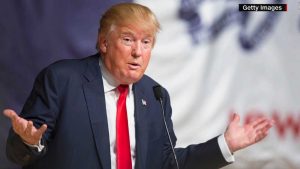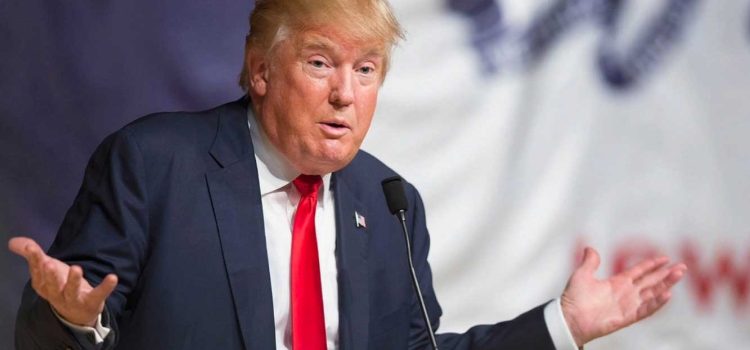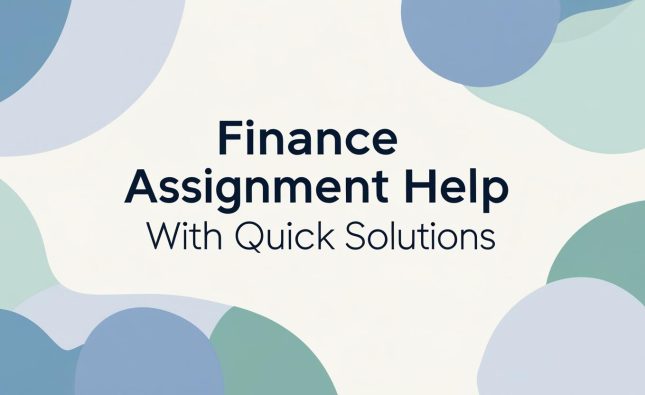
In a bid to revitalize the American economy and attract investments, former President Donald Trump has consistently championed the reduction of taxes and regulations. His administration asserted that these measures would stimulate economic growth, foster innovation, and create jobs. One of Trump’s key strategies was to appeal directly to top CEOs, promising them favorable conditions for conducting business in the United States. This article examines Trump’s pledges regarding tax cuts and deregulation, analyzes their potential impacts, and evaluates their effectiveness in attracting corporate leaders.
Trump’s Tax Reduction Promises

During his presidency, Trump frequently pledged to lower corporate taxes, arguing that high tax rates stifled economic expansion and discouraged companies from investing domestically. In 2017, his administration passed the Tax Cuts and Jobs Act (TCJA), which significantly slashed the corporate tax rate from 35% to 21%. Trump asserted that this reduction would incentivize businesses to repatriate profits, expand operations, and create more employment opportunities.
Analysis Table – Trump’s Tax Reduction Promises
| Promise | Implementation | Impact |
|---|---|---|
| Lowering corporate tax rates | Passed Tax Cuts and Jobs Act (TCJA) | Increased business investment; job creation |
| Encouraging profit repatriation | Tax incentives for repatriation | Capital inflow; potential for reinvestment |
Trump’s Deregulation Agenda
In addition to tax cuts, Trump promised to streamline regulatory processes and reduce bureaucratic red tape. He argued that excessive regulations hampered businesses’ ability to innovate and compete globally. Throughout his presidency, Trump’s administration rolled back numerous regulations across various sectors, particularly in energy, finance, and environmental protection. This deregulatory agenda aimed to provide businesses with more flexibility, lower compliance costs, and spur industry growth.
Challenges and Controversies
Despite the intentions behind Trump’s tax and deregulation agenda, controversies arose regarding their fairness and effectiveness. Critics argued that the benefits of tax cuts disproportionately favored large corporations and the wealthy, exacerbating income inequality. Additionally, concerns were raised about the potential negative consequences of deregulation, such as environmental degradation and consumer protection lapses. Moreover, some analysts questioned the sustainability of relying solely on tax cuts and deregulation to stimulate economic growth, emphasizing the importance of complementary policies addressing infrastructure, education, and healthcare.
Legacy and Future Implications
As the Trump administration’s policies continue to reverberate, their legacy and future implications remain subjects of intense scrutiny and debate. While some industries thrived under the deregulatory environment, others faced challenges related to environmental degradation and public health. The Biden administration has taken steps to reverse some of Trump’s policies, signaling a shift in regulatory priorities. However, the enduring impact of Trump’s tax cuts and deregulation on corporate decision-making, investment patterns, and economic competitiveness will likely shape the trajectory of the U.S. economy for years to come. Consequently, policymakers and business leaders must carefully assess the lessons learned from the Trump era and chart a path forward that balances economic growth with social and environmental sustainability.
Analysis Table – Trump’s Deregulation Agenda
| Promise | Implementation | Impact |
|---|---|---|
| Rollback of regulations across sectors | Executive orders; agency directives | Reduced compliance burden; increased industry competitiveness |
| Streamlining regulatory processes | Revisions to administrative rules | Improved efficiency; faster project approvals |
Comparative Analysis
Trump’s tax reduction and deregulation policies were met with mixed reactions. Supporters lauded these measures, crediting them with boosting economic growth, enhancing corporate profitability, and creating jobs. Critics, however, raised concerns about the potential long-term consequences, including widening income inequality, environmental degradation, and financial instability. Moreover, the efficacy of Trump’s policies in attracting top CEOs varied depending on individual corporate interests, industry dynamics, and broader economic conditions.
Conclusion
Donald Trump’s promises to cut taxes and regulations formed a cornerstone of his economic agenda, aimed at spurring investment and fostering business confidence. While his administration succeeded in implementing significant tax cuts and regulatory rollbacks, the outcomes were subject to debate. The long-term impacts of these policies, including their effects on economic inequality and environmental sustainability, remain uncertain. As the United States continues to navigate its economic landscape, the legacy of Trump’s tax and regulatory reforms will undoubtedly shape future policy discussions and corporate strategies










